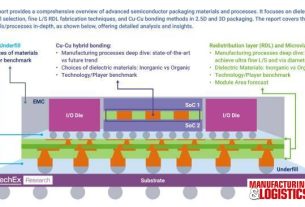By Mary Heiser, Director, Industry & Product Marketing, FourKites.
In today’s intricate food and beverage supply chains, ensuring product quality from farm to fork is paramount. One of the most crucial factors determining the integrity of perishable products is temperature.
As any supply chain professional knows, even a slight temperature deviation can mean the difference between delivering a delicious ice cream cone or a disappointing puddle. And with record-breaking heat occurring nearly every summer, it’s never been more difficult to keep cargo cool.
Understanding and actively monitoring the temperature conditions of stored and transported goods, particularly in the meat and dairy sectors, can significantly mitigate risks and costs associated with inventory loss, product recalls and dissatisfied customers.
The Rising Costs of Ignoring Temperature Tracking
One of the immediate threats of disregarding temperature tracking is the loss of inventory due to spoilage. A report by the Food and Agriculture Organization (FAO) suggests that approximately 14% of the world’s food is lost between harvest and retail, much of this due to inadequate cold chain facilities and poor temperature management during transportation. The financial implications of such losses are significant, particularly for businesses operating with narrow margins.
Beyond inventory loss, companies face the risk of shipment rejection. If a shipment does not meet temperature compliance standards, it’s often rejected unless the shipper can provide a verifiable record of maintaining correct temperature during transit. A rejected shipment is not just a one-off cost, but it disrupts the supply chain, delaying delivery timelines and negatively affecting customer relationships.
Even more daunting is the risk and cost associated with product recalls. A study by the Food Marketing Institute (FMI) and the Grocery Manufacturers Association (GMA) found that the average cost of a single food recall is around $10 million in direct costs alone. This figure doesn’t account for the ripple effects of a recall — brand reputation damage, lost sales and litigation costs.
In a world where consumers are increasingly conscious about food safety and quality, a temperature-related mishap can have long-term implications on customer loyalty and brand image. According to a study by FoodLogiQ, 18% of consumers would abandon a brand if a recall was issued due to consumer sickness and another 43% reported they would leave the brand for a few months before coming back, emphasising the lasting impact of spoilage.
Exploring Temperature Tracking Options
Passive Temp Trackers (Good)
Passive trackers are one option, but probably not the most useful. These trackers sit inside a trailer and log temperature data throughout the journey which can be reviewed upon completion. But this only provides an after-the-fact look into what has transpired, which can be too late to salvage the product.
Built-in Temp Trackers (Better)
Refrigerated trucks, or “reefers,” come equipped with built-in trackers, but without connected software, they function just like passive trackers. Pair it with the right software, however, and these built-in trackers can leap into the realm of the Internet of Things (IoT), providing real-time insights into the state of your cargo.
Active Trackers (Best)
The real game-changer in temperature tracking is the active tracker. Utilising cellular networks, these devices continuously monitor temperature conditions. When integrated with visibility software, active trackers can trigger alerts when something is out of the set temperature tolerance range, empowering timely interventions and more cold chain control.
Unleashing the Full Potential of Advanced Temperature Tracking
Proactively safeguard your cold chain with a real-time supply chain visibility solution that provides integrated temperature tracking.
Customisable Threshold Limits
With capabilities like automatic notifications and customisable threshold limits, shippers can detect critical events, avoid false positives and improve overall efficiency.
Tailoring temperature tolerances to specific types of goods, such as fresh vs. frozen foods, provides an extra layer of protection, as does the ability to track temperature data directly from trailer telematics systems updated every 15 minutes.
Improved Performance, Reduced Costs
Beyond these benefits, by combining advanced temperature tracking with end-to-end supply chain visibility, you can boost on-time delivery, reduce overhead costs and enhance customer satisfaction. It works hand in hand with other features of a predictive supply chain visibility platform to safeguard cold chain inventory, reduce the risk of spoiled loads and minimise transportation costs.
This added visibility can also improve retailer relationships by reducing the frequency of spot buys. In turn, this helps retailers reduce operational costs, streamline dock operations and utilise staff more efficiently.
Maximising Cold Chain Efficiency: A Three-Pronged Approach
To further enhance the performance of your cold chain operations, consider incorporating these three strategies:
- Implement a Robust Contingency Plan: Cold chain logistics can be fraught with unpredictability. Natural disasters, equipment failures, or unexpected delays can put your temperature-sensitive cargo at risk. To safeguard against these unforeseen challenges, create a comprehensive contingency plan. This might encompass backup transportation arrangements, alternate power sources, or additional cold storage spaces. With a robust contingency plan, you can mitigate losses and ensure business continuity when faced with adverse events.
- Utilise Data Analysis: Leverage the power of data in your supply chain operations. Use the information collected from your temperature monitoring systems to identify trends and detect potential weak points in your cold chain. With this data, you can make proactive adjustments, improve efficiency and reduce the risk of temperature excursions.
- Collaborate Closely with Partners: The success of a cold chain heavily depends on seamless collaboration between all stakeholders — suppliers, transporters and retailers. Foster open and frequent communication with your partners to ensure everyone is aligned in their role in maintaining the cold chain. Collaborative efforts can help reduce errors, improve response times, and ultimately enhance the quality of delivered products.
Embracing these strategies, along with advanced temperature tracking and end-to-end visibility solutions, can revolutionise the way you manage your cold chain logistics.
Turning up the Heat on Cold Chain Efficiency
Temperature tracking has emerged as an indispensable tool for safeguarding product quality and optimising logistics operations. Advanced temperature tracking solutions, coupled with proactive strategies such as contingency planning, data analysis and collaborative partnerships, can significantly enhance cold chain efficiency.
Ignoring temperature tracking in your supply chain could be the equivalent of leaving money on the table — or even worse, seeing it melt away. It’s time to turn up the heat on cold chain efficiency, leveraging the power of technology


